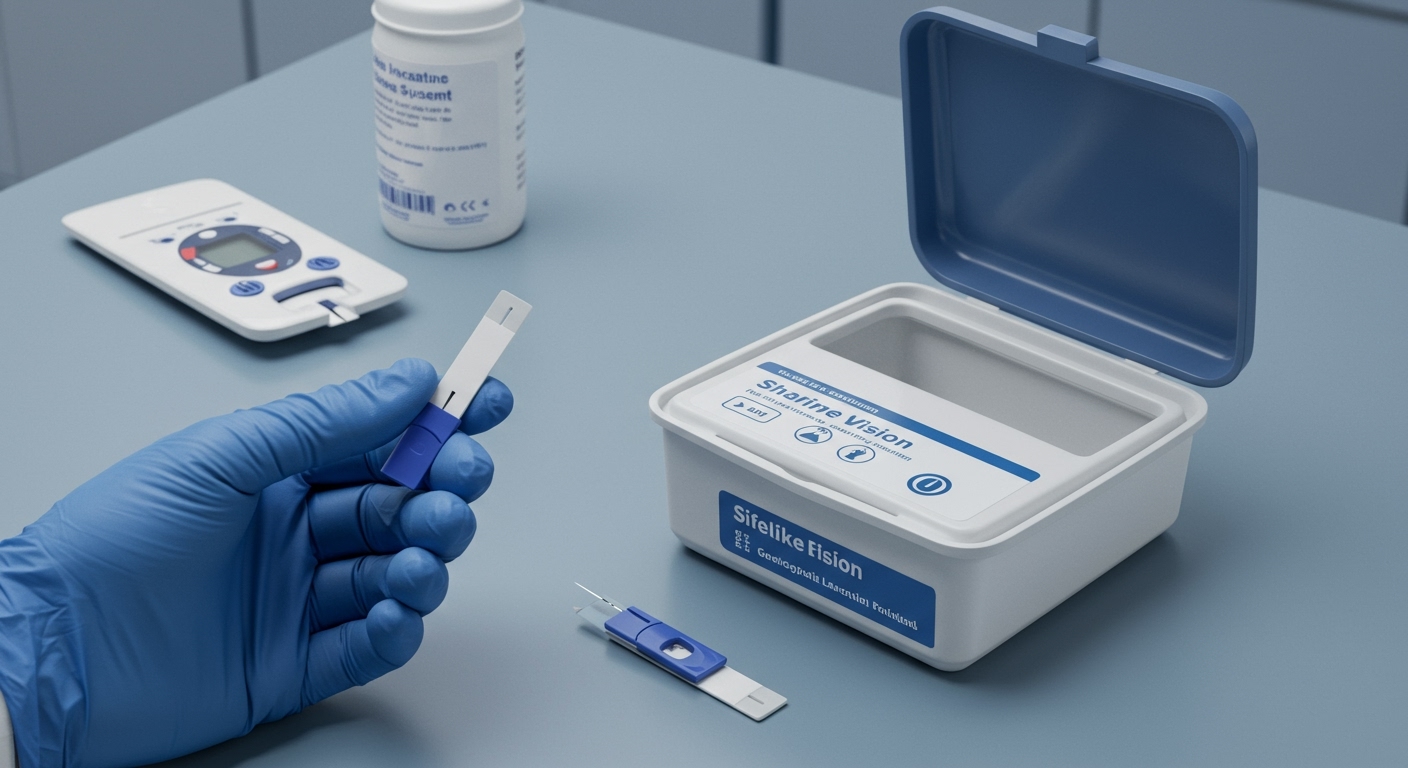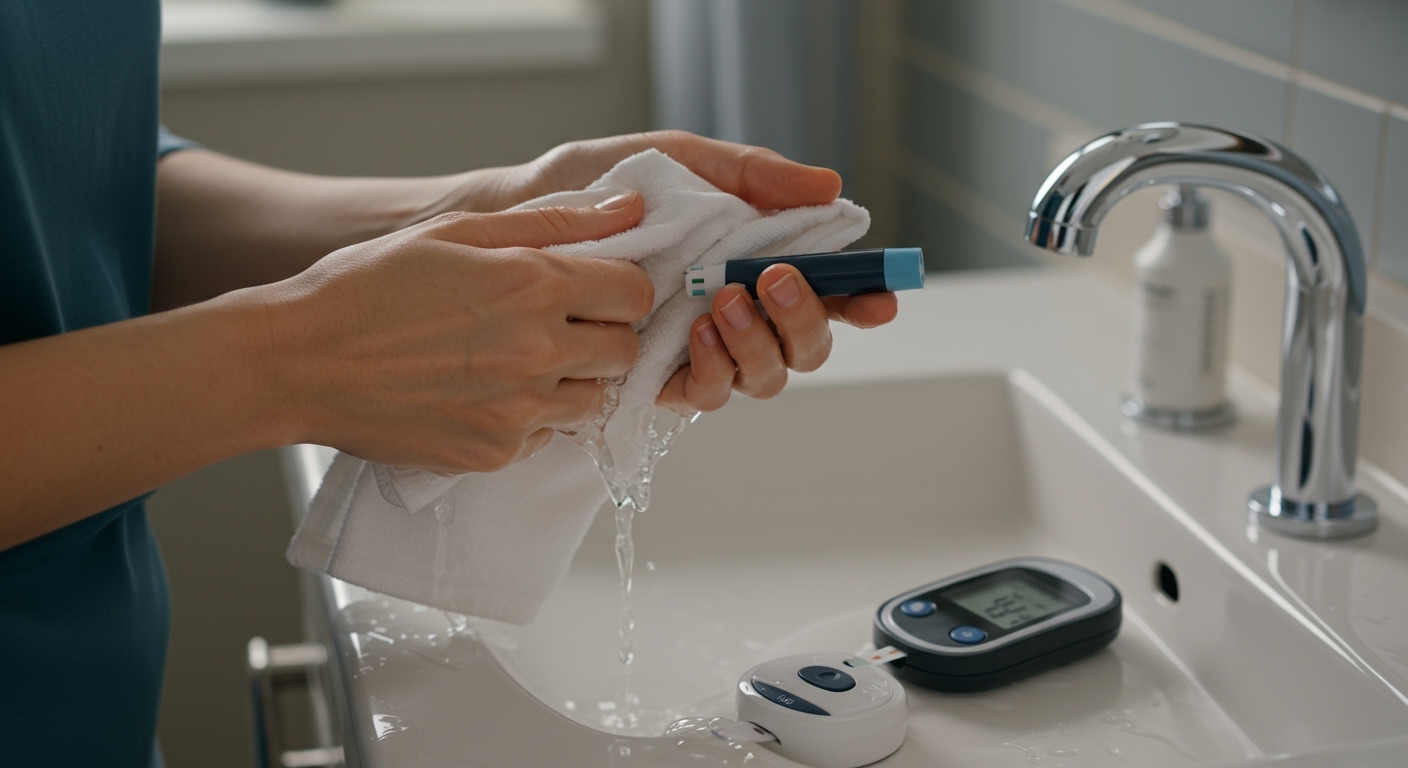Lancets: A Complete Guide to Blood Glucose Testing
Oct 3rd 2025
Blood glucose testing is necessary to millions of patients with diabetes today. It is estimated that more than 38 million Americans currently deal with diabetes by monitoring the level of sugar in their blood. Everyday testing assists individuals to track the glucose levels and avoid serious medical conditions. Some of the most prevalent diagnostic tools used to test include the lancet needles and lancing devices. These tools are safe, quick, and painless in their ability to collect blood, giving accurate glucose readings. This is the full-fledged guide on what a lancet is, and how to use it safely on a daily basis.

What is a Lancet and Lancing Device?
A lancet needle is a small sharp point that is used to prick the skin. It creates a tiny puncture through which a drop of blood can be taken to be tested. A lancing device frequently contains a lancing needle to be more controllable and comfortable. The device discharges the lancet through a fast trigger to reduce pain. There is an adjustable lancet device that many people have used to adjust the depth to suit various types of skin. The device such as the Aimsco Adjustable Lancet Device enables pain-free pricking of the fingers easily. These devices render the daily testing of glucose much quicker, secure and more precise amongst people of all ages. To illustrate, lancets constitute a significant section of the greater market of medical diagnostic tools that are used worldwide.
Understanding Lancet Sizes (Gauge)
Lancets are available in many sizes, measured by a number called gauge. The gauge tells you how thick or thin the lancing needle is for testing. A higher gauge means the lancet needle is thinner and feels more gentle on skin. A lower gauge is slightly thicker and draws a bigger blood drop for testing. Picking the correct gauge is important for comfort and accurate blood collection. People who test daily often choose higher gauges to reduce pain during pricks. Those with thicker skin may prefer lower gauges to get enough blood for meters. Pairing the gauge with an adjustable lancet device helps control puncture depth. The next section explains exactly what 30g means when selecting lancet sizes. After that, you will learn how to choose a gauge that fits your testing needs.
What Does 30g Mean?
The term “gauge” refers to the thickness of a lancet needle. The 30g lancet indicates that a needle is extremely fine and does not inflict much pain. The more the gauge number the finer the needle and the lighter the puncture. A smaller needle extracts sufficient blood to perform an accurate test and requires less time with a better level of comfort. Such pain-reducing products as the EasyTouch Twist Lancet 30g are popular with regard to lowering pain when testing is done daily. Many people prefer these options for regular use because they balance comfort and performance perfectly.
Choosing a Gauge for Comfort
Different gauges suit different needs. Thicker gauges, such as 28g, draw more blood but can feel slightly sharper. Thinner gauges like 32g or 33g are much gentler but may produce smaller samples. People with thicker skin or calluses sometimes choose 28g for reliable blood drops. Those seeking maximum comfort often select 32g or 33g for a softer experience. Popular options include:
- EasyTouch 28g Lancets: Ideal for people needing larger blood samples.
- EasyTouch 32g and 33g Lancets: Perfect for those prioritizing comfort and minimal pain.
According to US diabetes product trends, comfort is now a major factor when choosing lancets. Selecting the right gauge helps balance sample size with a pain-free testing experience.
How to Use a Lancet and Lancing Device Correctly
Proper technique ensures accurate results and reduces the risk of infection. Follow these steps for safe and effective testing:
- Wash hands thoroughly with warm water and dry them completely before testing.
- Insert a new lancet needle into the adjustable lancet device.
- Adjust the depth setting based on personal skin thickness or doctor recommendations.
- Place the device against the side of the fingertip for the blood sample.
- Press the trigger to release the lancing needle quickly and draw a small blood drop.
- Use the drop with a glucose meter and blood glucose test strips to measure blood sugar levels.
There are so many individuals who are relying on trusted systems like the EasyTouch HealthPro Glucose Monitoring System to achieve accurate results. Doing these steps routinely will guarantee sound readings and help keep the daily testing as comfortable as possible.

Are Lancets Reusable? (Spoiler: No)
Lancets are designed for single use only. The reuse of a lancet needle can also contribute to the threat of infection and inaccurate test results. The needle gets dulled after once used and pricking of fingers is even more painful. The US FDA highly discourages reuse of the lancet needles to prevent cross contamination. Daily single-use testing is now affordable and well thanks to easy to use products such as EasyTouch Twist Lancets. Fresh twist lancet 30g makes the needle sharp and sterile each time. Never leave used lancets in a sharps container because these lancets may harm you and others.
Conclusion
Although lancet needles are simple to operate, they are essential in management of diabetes. Proper selection of the gauge enhances comfort and proper testing on a daily basis. The infection can be avoided by using a new lancet needle each time, and the results are reliable. As the market value of diabetes care in the US is expected to hit $32 billion by 2030, the availability of quality lancets is important to millions of people. Proper use and safe lancet usage supports effective glucose control and healthier lives.
Looking for reliable lancets and glucose monitoring tools? Explore the full range of diagnostic instruments and supplies at Arpovo Health, including EasyTouch Twist Lancets, adjustable lancet device options, and trusted glucose meter systems. Shop now to take control of your blood sugar testing with comfort, safety, and confidence.

